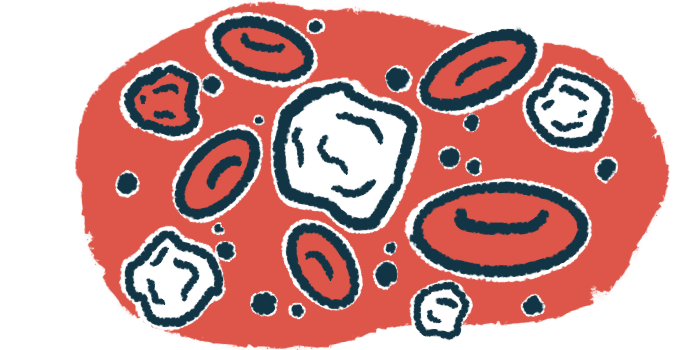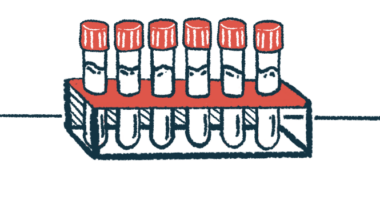Dynamics of CAR T-cell therapy in NMOSD shown in study
Findings are result of first in-depth analysis of patients' body fluids

Immune T-cells of the CAR T-cell therapy CT103A are able to rapidly eliminate disease-driving immune cells and reduce immune cells’ overall inflammatory activity in people with neuromyelitis optica spectrum disorder (NMOSD), a study shows.
“This study is the first in-depth single-cell … analysis of multiple types of body fluids from NMOSD patients in the world, depicting the dynamic evolutionary trajectories of CAR-T cells in patients with immune diseases at the cellular and molecular level,” Wei Wang, MD, the study’s senior author at Tongji Hospital in China, said in a press release from IASO Bio, CT103A’s developer.
CAR T-cell therapies involve collecting a patient’s immune T-cells and equipping them with a lab-made molecular weapon called a chimeric antigen receptor (CAR) that can be designed to target a specific molecule. When the modified T-cells are infused back into the patient, the CAR directs them to attack and destroy cells positive for that target.
The activities of CAR T-cells made from NMOSD patients were different from those made from people with myeloma, a blood cancer, for which CAR T-cell therapies were originally developed, which provides “scientific insights into refining CAR-T cell therapies for autoimmune diseases,” Wang said.
The study, “Single-cell analysis of anti-BCMA CAR T cell therapy in patients with central nervous system autoimmunity,” was published in Science Immunology.
CT103A, also known as equecabtagene autoleucel or eque-cel, is a CAR T-cell therapy that’s designed to eliminate plasma cells — immune cells that produce large amounts of antibodies, those involved in fighting invaders along with the self-reactive antibodies that drive autoimmune diseases like NMOSD.
Mechanisms of CAR T-cell therapy in NMOSD
Scientists at Tongji Hospital are conducting a Phase 1 clinical trial dubbed CARTinNS (NCT04561557) to test a single CT103A dose in up to 36 adults with relapsed or refractory antibody-driven neuroinflammatory disorders such as NMOSD. The trial, which is being conducted with the help of IASO Bio, is still recruiting patients.
Interim data from 12 NMOSD patients who were followed for up to more than a year showed promising safety and efficacy — only one patient had a NMOSD relapse after receiving the CAR T-cell therapy.
While CAR T-cell therapies are considered a promising approach for many autoimmune diseases, their exact biological mechanisms aren’t completely understood, leading researchers at Tongji Hospital and IASO Bio to analyze samples of blood and cerebrospinal fluid (CSF), which surrounds the brain and spinal cord, from five CT103A-treated NMOSD patients in CARTinNS.
Samples were collected over multiple points in time before and after the CAR T-cell therapy.
The infused CAR T-cells grew and multiplied, reaching peak numbers about 10 days after the infusion, after which numbers steadily declined over about a month, results showed.
The CAR T-cells also eliminated plasma cells as expected and levels of plasma cells and antibodies declined sharply after dosing. CAR T-cells were even detected in direct physical contact with plasma cells as they attacked them.
Also, CAR T-cells producing certain chemotactic, or cell movement, markers were able to better infiltrate the central nervous system, that is, the brain and spinal cord, and eliminate plasma cells there.
“We found that CAR-T cells with chemotactic properties can more easily … enter the central nervous system to directly kill abnormal immune cells [there],” said Wang, who noted the finding “is very critical for the treatment of immune abnormalities in the central nervous system.”
Before CT103A treatment, many types of immune cells in patients’ CSF samples showed signs of increased inflammatory activity, consistent with the inflammatory attack on the brain and spinal cord that marks NMOSD. But within a few months after CT103A treatment — and the subsequent reduction in plasma cells and antibodies — CSF immune cells showed markedly less inflammatory activity.
“Because the abnormally expanded [plasma cells] in the CSF were positively correlated with neuroinflammation, the elimination of CSF [plasma cells] after CAR T-cell infusion likely led to the suppression of immune cell activation and related inflammatory responses,” the researchers wrote.
CAR T-cell therapy in NMOSD, myeloma
In a final set of tests, the researchers compared the NMOSD patients’ CAR T-cells with those generated from five people with myeloma, a type of blood cancer driven by uncontrolled growth of plasma cells.
CAR T-cells from NMOSD patients generally tended to grow less and show poorer cell-killing abilities than those from myeloma patients. This may reflect the already altered immune function in NMOSD patients and may help explain why their CAR T-cells were fairly short-lived, the researchers said.
The finding may also help to explain why cytokine release syndrome, a common side effect of CAR T-cell therapies caused by out of control inflammation, has generally been milder and less frequent in trials of NMOSD patients than of myeloma patients treated with similar therapies.
“This research achievement has once again created a “world first,” further validating the efficacy, safety and persistence of CAR-T therapy in the treatment of autoimmune diseases, and once again firming the determination of IASO Bio to continue to focus on the development of CAR-T products in the field of autoimmunity,” said Jinhua Zhang, founder and CEO of IASO Bio.






